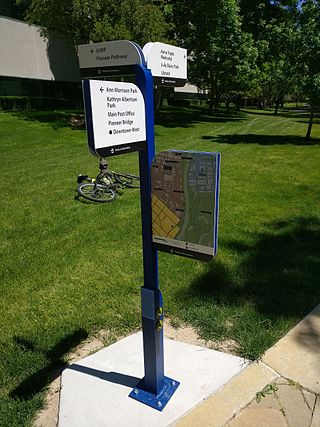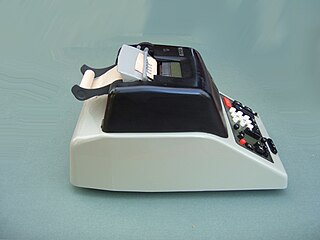The following outline is provided as an overview of a topical guide to design:
Design (as a verb: designing, or, to design) is the intentional creation of a plan or specification for the construction or manufacturing of an object or system or for the implementation of an activity or process. Design (as a noun: a design) can refer to such a plan or specification (e.g. a drawing or other document) or to the created object, etc., and features of it such as aesthetic, functional, economic or socio-political. [1]

A design is a concept of or proposal for an object, a process, or a system. Design refers to something that is or has been intentionally created by a thinking agent, though it is sometimes used to refer to the nature of something - its design. The verb to design expresses the process of developing a design. In some cases, the direct construction of an object without an explicit prior plan may also be considered to be a design. A design is expected to have a purpose within a certain context, usually has to satisfy certain goals and constraints, and to take into account aesthetic, functional, economic, environmental or socio-political considerations. Typical examples of designs include architectural and engineering drawings, circuit diagrams, sewing patterns and less tangible artefacts such as business process models.

Computer-aided design (CAD) is the use of computers to aid in the creation, modification, analysis, or optimization of a design. This software is used to increase the productivity of the designer, improve the quality of design, improve communications through documentation, and to create a database for manufacturing. Designs made through CAD software help protect products and inventions when used in patent applications. CAD output is often in the form of electronic files for print, machining, or other manufacturing operations. The terms computer-aided drafting (CAD) and computer-aided design and drafting (CADD) are also used.

A prototype is an early sample, model, or release of a product built to test a concept or process. It is a term used in a variety of contexts, including semantics, design, electronics, and software programming. A prototype is generally used to evaluate a new design to enhance precision by system analysts and users. Prototyping serves to provide specifications for a real, working system rather than a theoretical one. In some design workflow models, creating a prototype is the step between the formalization and the evaluation of an idea.

Industrial design is a process of design applied to physical products that are to be manufactured by mass production. It is the creative act of determining and defining a product's form and features, which takes place in advance of the manufacture or production of the product. Industrial manufacture consists of pre-determined, standardized and repeated, often automated, acts of replication, while craft-based design is a process or approach in which the form of the product is determined personally by the product's creator largely concurrent with the act of its production.

A designer is a person who plans the form or structure of something before it is made, by preparing drawings or plans.
Software design is the process by which an agent creates a specification of a software artifact intended to accomplish goals, using a set of primitive components and subject to constraints. The term is sometimes used broadly to refer to "all the activity involved in conceptualizing, framing, implementing, commissioning, and ultimately modifying" the software, or more specifically "the activity following requirements specification and before programming, as ... [in] a stylized software engineering process."
Rapid application development (RAD), also called rapid application building (RAB), is both a general term for adaptive software development approaches, and the name for James Martin's method of rapid development. In general, RAD approaches to software development put less emphasis on planning and more emphasis on an adaptive process. Prototypes are often used in addition to or sometimes even instead of design specifications.

Usability can be described as the capacity of a system to provide a condition for its users to perform the tasks safely, effectively, and efficiently while enjoying the experience. In software engineering, usability is the degree to which a software can be used by specified consumers to achieve quantified objectives with effectiveness, efficiency, and satisfaction in a quantified context of use.

In systems engineering, information systems and software engineering, the systems development life cycle (SDLC), also referred to as the application development life cycle, is a process for planning, creating, testing, and deploying an information system. The SDLC concept applies to a range of hardware and software configurations, as a system can be composed of hardware only, software only, or a combination of both. There are usually six stages in this cycle: requirement analysis, design, development and testing, implementation, documentation, and evaluation.
In computer programming, a software framework is an abstraction in which software, providing generic functionality, can be selectively changed by additional user-written code, thus providing application-specific software. It provides a standard way to build and deploy applications and is a universal, reusable software environment that provides particular functionality as part of a larger software platform to facilitate the development of software applications, products and solutions.
Product design as a verb is to create a new product to be sold by a business to its customers. A very broad coefficient and effective generation and development of ideas through a process that leads to new products. Thus, it is a major aspect of new product development.

User interface (UI) design or user interface engineering is the design of user interfaces for machines and software, such as computers, home appliances, mobile devices, and other electronic devices, with the focus on maximizing usability and the user experience. In computer or software design, user interface (UI) design primarily focuses on information architecture. It is the process of building interfaces that clearly communicate to the user what's important. UI design refers to graphical user interfaces and other forms of interface design. The goal of user interface design is to make the user's interaction as simple and efficient as possible, in terms of accomplishing user goals.
A systems integrator is a person or company that specializes in bringing together component subsystems into a whole and ensuring that those subsystems function together, a practice known as system integration. They also solve problems of automation. Systems integrators may work in many fields but the term is generally used in the information technology (IT) field such as computer networking, the defense industry, the mass media, enterprise application integration, business process management or manual computer programming. Data quality issues are an important part of the work of systems integrators.
Unified Structured Inventive Thinking (USIT) is a structured, problem-solving methodology for finding innovative solution concepts to engineering-design type problems. Historically, USIT is related to Systematic Inventive Thinking (SIT), which originated in Israel and is related to TRIZ, the Russian methodology. It differs from TRIZ in several ways, but most importantly it is a simpler methodology, which makes it quicker to learn and easier to apply. It requires no databases or computer software.

The systems architect is an information and communications technology professional. Systems architects define the architecture of a computerized system in order to fulfill certain requirements. Such definitions include: a breakdown of the system into components, the component interactions and interfaces, and the technologies and resources to be used in its design and implementation.
Design methods are procedures, techniques, aids, or tools for designing. They offer a number of different kinds of activities that a designer might use within an overall design process. Conventional procedures of design, such as drawing, can be regarded as design methods, but since the 1950s new procedures have been developed that are more usually grouped together under the name of "design methods". What design methods have in common is that they "are attempts to make public the hitherto private thinking of designers; to externalise the design process".
Design thinking refers to the set of cognitive, strategic and practical procedures used by designers in the process of designing, and to the body of knowledge that has been developed about how people reason when engaging with design problems.

A functional specification in systems engineering and software development is a document that specifies the functions that a system or component must perform.
In software engineering, a software development process or software development life cycle (SDLC) is a process of planning and managing software development. It typically involves dividing software development work into smaller, parallel, or sequential steps or sub-processes to improve design and/or product management. The methodology may include the pre-definition of specific deliverables and artifacts that are created and completed by a project team to develop or maintain an application.
Digital product design is an iterative design process used to solve a functional problem with a formal solution. A digital product designer identifies an existing problem, offers the best possible solution, and launches it to a market that demonstrates demand for the particular solution. The field is considered a subset of product design. Some digital products have both digital and physical components, but the term is mainly used for products produced through software engineering. Since digital product design have become mainstream in the creative industry, a digital product designer oftentimes is simply referred to as a "product designer" in job posts.